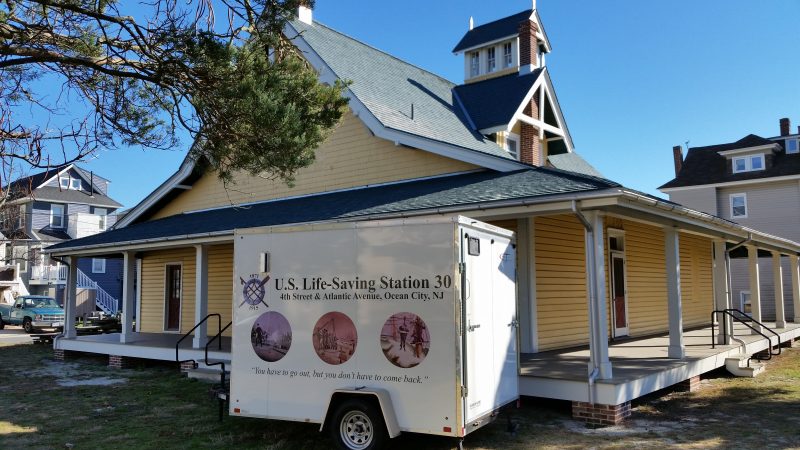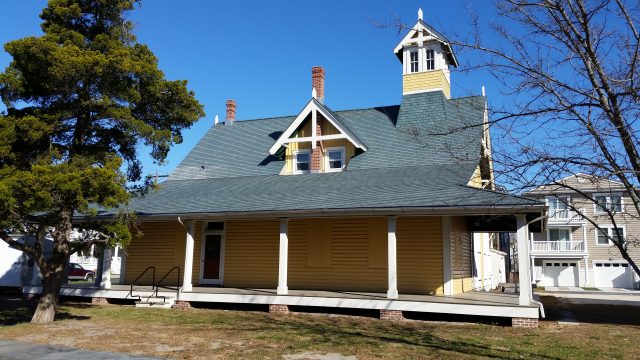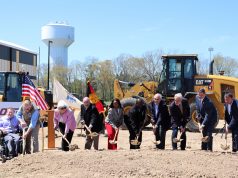By Donald Wittkowski
One of the final parts of the renovation of Ocean City’s historic Life Saving Station into a public museum this year will involve cleaning up the grounds that were swamped by flood waters from Hurricane Sandy in 2012.
At its meeting 7 p.m. Thursday, City Council is expected to award a $31,000 architectural contract for design work and construction management for the removal of sand, stones and other debris from the site at Fourth Street and Atlantic Avenue.
As part of the contract, Michael Calafati Architect LLC of Cape May will also oversee restoration work to transform the appearance of the property back to the station’s early 20th century heyday, including fixing the damaged sidewalks and erecting a flagpole and a wooden fence that replicate the originals.
“This will restore the historic integrity of the landscape and physical setting of the Life Saving Station to its period of significance and when it was in its prime, circa 1906,” Calafati wrote in a Dec. 28 memo to the city explaining the project.
In addition, the lawn will be covered with sand to replicate the station’s former beachfront location. The building had once overlooked the ocean, but shifting sands caused by a powerful coastal storm in 1902 or 1903 reshaped the island’s beachfront. As a result, a huge swath of sand was pushed in front of the station and left it about one-third of a mile from the ocean.
Although the station itself was not damaged by Sandy’s fury, tidal flooding from the 2012 hurricane inundated the grassy lawn with a thick layer of sand, stones and flotsam that must be cleaned up, Calafati said in his memo.

Cleanup work to the property will be done as restoration continues on the interior of the building to transform the station into a “living history museum.” U.S. Life-Saving Station 30, a nonprofit organization that is overseeing the renovations and will operate the museum for the city, has said the building will resemble what it was like in the early 20th century.
“We’re taking it back between 1905 and 1910, so everyone who comes here will experience a moment in time. You’ll feel the building come alive again during that time period,” John Loeper, chairman of the organization, said in a recent interview.
To stock the museum, Loeper’s group has been busy collecting boats, life-saving devices, furnishings and other artifacts that are either originals or replicas of the early 20th century.
Loeper has been shooting for a grand opening for Memorial Day weekend, although it would take another month to furnish the building and move in the museum’s artifacts, he said. Admission will be free.
Construction still must be completed on the windows, doors and interior before the museum opens. Restoration work on the building’s exterior has been finished, including a new roof and a new coat of yellow paint that matches the original color. The words “U.S. Life Saving Station” have been painted in big, black letters on the side facing the ocean.
In his memo, Calafati said the station was built in 1886 and is the only surviving member of its type in New Jersey. It was among only six of its kind built between 1882 and 1891 in the nation, he noted.
For years, the old building itself was in need of rescue. The city purchased the two-story structure from private owners in 2010 for nearly $900,000, ending a decade-long battle to save it from demolition.
Altogether, the purchase price for the building and the cost of renovations will come to about $3 million, according to figures released by Frank Donato, the city’s chief financial officer. The city has been awarded nearly $1.3 million in grants to help pay for the project.
Loeper’s group has raised and invested about $220,000 to acquire artifacts and other materials for the building. It has also agreed to share as much as $750,000 in revenue to offset the city’s costs.






